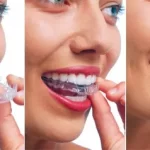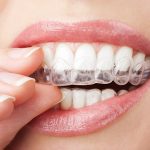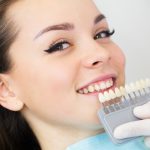For kids, wearing braces is almost a right of passage. While most patients are between the ages of 9 and 14, a growing number of adults are getting braces as well.
Between 2012 and 2014, 1,441,000 people aged 18 and over in the US and Canada sought orthodontal treatment. Around 27% of orthodontic patients in Canada and the US are over 18.
And there are good reasons for getting braces as an adult. But many adults don’t realize the benefits of braces for adults. Nor do they fully understand the steps to getting braces.
If your smile isn’t as perfect as you’d like, keep reading. We’re sharing with you 12 great reasons for getting braces.
Table of Contents
The Process of Getting Braces
What are the steps to getting braces? For many adults, they assume it’s hard, but it’s actually a fairly simple process. There are only six steps.
Here’s how the braces procedure works:
The Consultation
The first step toward getting braces is having a consultation with an orthodontist. Have your dentist forward your x-rays to the orthodontist before your consultation so the orthodontist can take a look at what’s going on.
The initial consultation is a great opportunity to ask any and all questions about the procedures and which type of braces works best for you. Make a list and bring it with you so you don’t forget.
She or he may recommend braces or Invisalign. View here for more information about the differences between Invisalign versus braces.
Before Treatment Begins
One of the steps to getting braces is to make sure your teeth are ready for the procedure. It’s a good idea to head back to your dentist before your braces are put on for a professional cleaning.
Also, there may be other issues your dentist needs to take care of such as extracting a tooth or dealing with periodontal problems prior to you having your braces put on.
The First Visit After Your Initial Consult
While your dentist has already supplied your orthodontist with a set of x-rays, prepare to have more x-rays taken. You’ll need x-rays taken of both your whole mouth and individual teeth.
The orthodontist needs to know if they will encounter issues with spacing between your teeth that may make things more difficult. Your orthodontist may need to insert spaces to help your mouth prepare for braces.
A Mold is Made of Your Teeth
You’ll also need a mold of your teeth taken. It’s an easy process that takes only a few minutes and is painless.
In order for your orthodontist to take an impression of your teeth, you’ll be asked to either bite down on a tray of soft impression materials for a few minutes, or she or he may take a digital scan of your entire mouth.
Having Your Braces Put On
The braces procedure lasts about two hours and is painless for most people. Your orthodontist begins by inserting a device designed to keep your mouth dry and your tongue in place.
Next, your teeth are dried and an etchant is applied to help your tooth surface bond more readily. Next, the braces are placed on your teeth using an adhesive to hold them in place.
A curing light hardens the adhesive and sets the bond. Afterward, the orthodontist runs an archwire through the braces to hold it in place with ligature bands.
Once your braces are on, there are certain foods to avoid until you’ve had your braces removed.
The Follow Up
Once you have your braces on your teeth, you’ll have to see your orthodontist every four to eight weeks for checkups. They will check your progress and make any necessary adjustments. The checkups usually only take 20 minutes or so.
When you’re teeth are ready, your orthodontist removes everything and polishes the enamel. They’ll recommend if you need to wear a retainer.
Always remember to continue brushing and flossing while you have your braces on to prevent any future oral health problems from arising.
Eating While Wearing Braces
Wearing braces makes mealtime a bit more interesting. For the next few days, it’s a good idea to stick to soft foods. Your mouth is likely to feel sore.
Avoid food items such as hard bread, raw vegetables, and tough meats. These can all cause problems with your orthodontic appliances.
Crunchy foods such as popcorn and ice. These foods can break your teeth and your orthodontia. And hard foods like nuts and hard pretzels will only get stuck in your braces and cause problems with your orthodontia.
Avoid Chewy, Sticky, and Sugary Foods
You should also avoid chewy foods such as bagels and licorice. Sticky foods such as caramels and gum will only get stuck to your braces. Sugary food can cause cavities.
It’s also best to cut up your food into small pieces and use your back teeth for chewing until you remove your braces.
1. Getting Braces Boosts Your Confidence
We see images of celebrities with perfect, white smiles everywhere we look. It takes a toll on our self-confidence when our smiles are less-than-perfect.
When you get treatment, you end up with a great looking smile that you want the whole world to see rather than hiding when someone wants to take your photo.
2. Social and Business Perks
Most people believe a great smile is the most important feature in making a great first impression. People with healthy, beautiful smiles are considered more attractive and stronger.
People trust people who smile showing their teeth. And having people trust you helps you get ahead socially and professionally.
3. Braces Are More Affordable Than Ever
While not all insurance companies willingly pay for adult braces, some do. Check with your insurance company to see how much, if anything, they’ll pay.
But even if your insurance won’t pay for braces, that doesn’t mean you can’t afford them. Your orthodontist can help you find the best payment options and treatment choices available.
4. You Actually Save Money by Getting Braces
Braces aren’t just for solving cosmetic issues. Braces can prevent other oral health problems from causing problems in the future.
If you don’t fix your teeth, you may end up paying out far more money in the future. Misaligned teeth cause periodontitis and caries. And they’re very expensive and painful to treat.
Save money in the future by getting braces now.
5. Prevent Gum Disease
One of the serious health issues that braces help prevent is gum disease. Braces help prevent gum disease by spacing out your teeth so you have enough room to properly brush and floss your teeth.
Otherwise, food gets easily lodged in between teeth which causes problems like gum disease, digestive problems, and halitosis.
6. Prevent Tooth Decay
Tooth decay happens when you don’t properly clean your teeth. Bacteria ends up accumulating in tiny crevices which in turn cause acid to build up.
The acidic build-up is what causes the enamel of your teeth to wear down. Enamel is what protects your teeth, without enamel, your teeth are in danger. And you can’t replace enamel once it’s gone.
7. Prevent Cavities
No one likes getting cavities. While cavities caught early are easy to treat, those left undetected or untreated are not. And it’s more expensive to treat if you don’t attend to it right away.
Braces align your teeth so you can properly clean your teeth.
8. Prevent TMJ and an Unproportioned Jaw
If you feel pain around your jaw space or notice a sound when you chew, there’s a good chance you have TMJ. Braces help treat TMJ caused by arrangement.
The braces should even ease your symptoms by moving your teeth into a better position.
Another problem is having an unproportioned jaw. That means your face isn’t proportioned and causing you problems if it’s noticeable.
Braces help make your lips and jaw more proportionate to your face.
9. They Look Better Than Dentures
We are living longer than any other generation before us. Many of us live well into our 90s.
Without braces, you’ve lived your entire life with a crooked smile. You could even wind up wearing dentures.
But getting braces as an adult means you have the entire rest of your life to enjoy having a perfect smile. It also means keeping your teeth for life.
10. Improves Your Speech
Most people don’t realize that having crooked teeth can impact the way they sound out words. It’s actually harder for people with misaligned teeth to pronounce certain sounds.
Being able to properly pronounce words means you’re taken more seriously professionally and personally. It helps boost your self-confidence, self-esteem, and helps ensure people take you seriously.
11. Prevents Bone Loss
Misaligned teeth also cause bone erosion. It happens when the bacteria in your mouth starts eating away at the bones.
Braces help straighten your teeth which should prevent bone loss from occurring.
12. You’ll Look Better
Let’s face it, we’re a nation obsessed with youth and beauty. When someone has crooked or unhealthy teeth, it makes them look older and less attractive.
Most adults choose to get braces so they look more attractive. A beautiful smile goes a long way.
As the “Annie” song says, “you’re not fully dressed without a smile.” And everyone deserves to feel confident and attractive when they smile.
Keep Learning
Now that you’ve learned everything you need to know about getting braces, it probably seems far less scary and a much easier process than you thought.
Arming yourself with knowledge means you’re empowering yourself. My blog is dedicated to helping you make healthy decisions. That includes everything from nutrition to the type of water you drink. Click here to learn why you should start drinking tap water.








